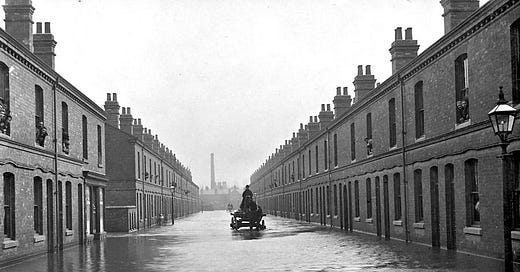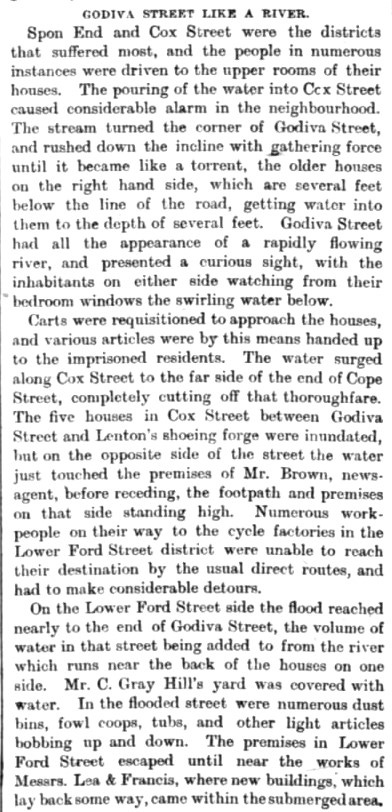On December 31, 1900, severe flooding was reported all across the Midlands, in some places 11 feet higher than normal levels. In Coventry, the River Sherbourne flooded a large part of the city and went down in history as “The Great Flood”. My great-Grandparents, Charles Hall and Kate Hall nee Widows were living in Coventry at the time, but their street was outside the flooded area. Not so his brother William “Willie” Hall and his family who lived in Godiva Street. This is what his street looked like:
The Midland Daily Telegraph carried the headline “Great Floods in Coventry”
In the article over three columns, the situation was described in various streets, including Godiva Street where Willie’s family lived, at number 52.
Mention is made of people trying to get to work in the cycle works, of which there were many in Coventry. My great-Grandfather Charles was one of them, working as a tyre fitter and cycle enameller. In the later 1921 census his place of work is given: the Hobart Cycle Co. in St. Patrick’s Road. If he was working there already in 1900 and not at another cycle works, then he would not have been able to get to work from Colchester that day because the flood would have stopped him. Perhaps he was able to help his brother instead.
The records show that the rain per hour over a 24 hour period was 3.77 inches with the worst downpour between midnight and 1am on New Year’s Day, according to Historic Coventry. The newspaper reports that “the difficulty in all parts is that persons had their food in the lower regions of the houses, and it was impossible to get down to it. There were cries of occupants in all parts for food, and in all kinds of carts every now and again persons were to be seen carrying eatables to their friends”.





